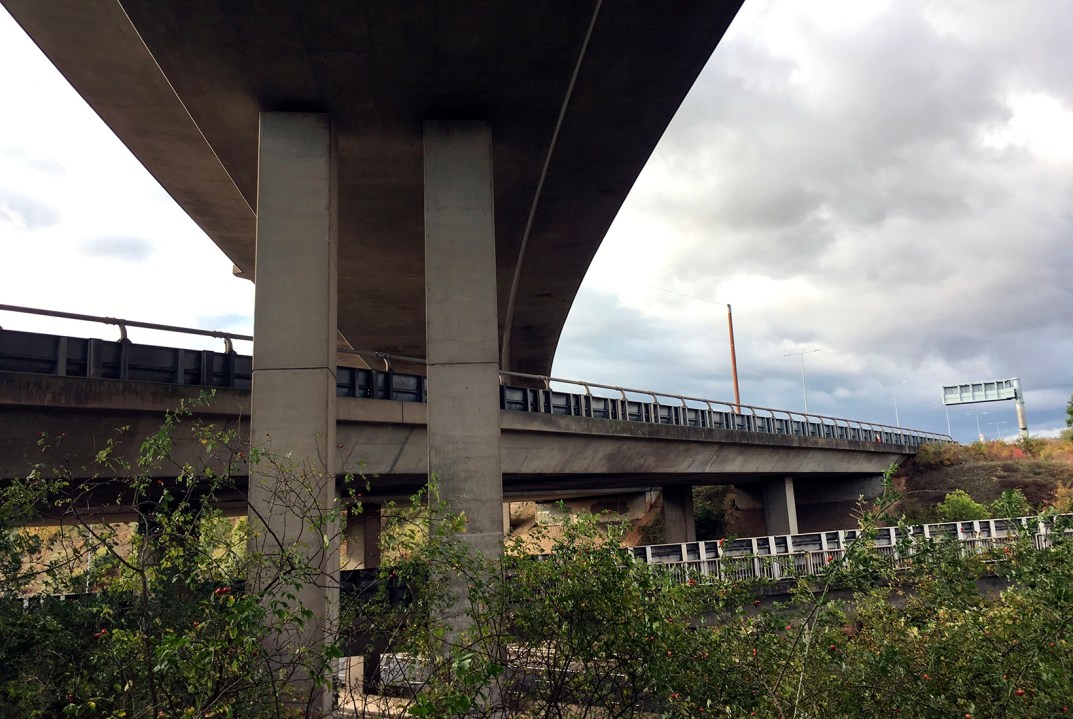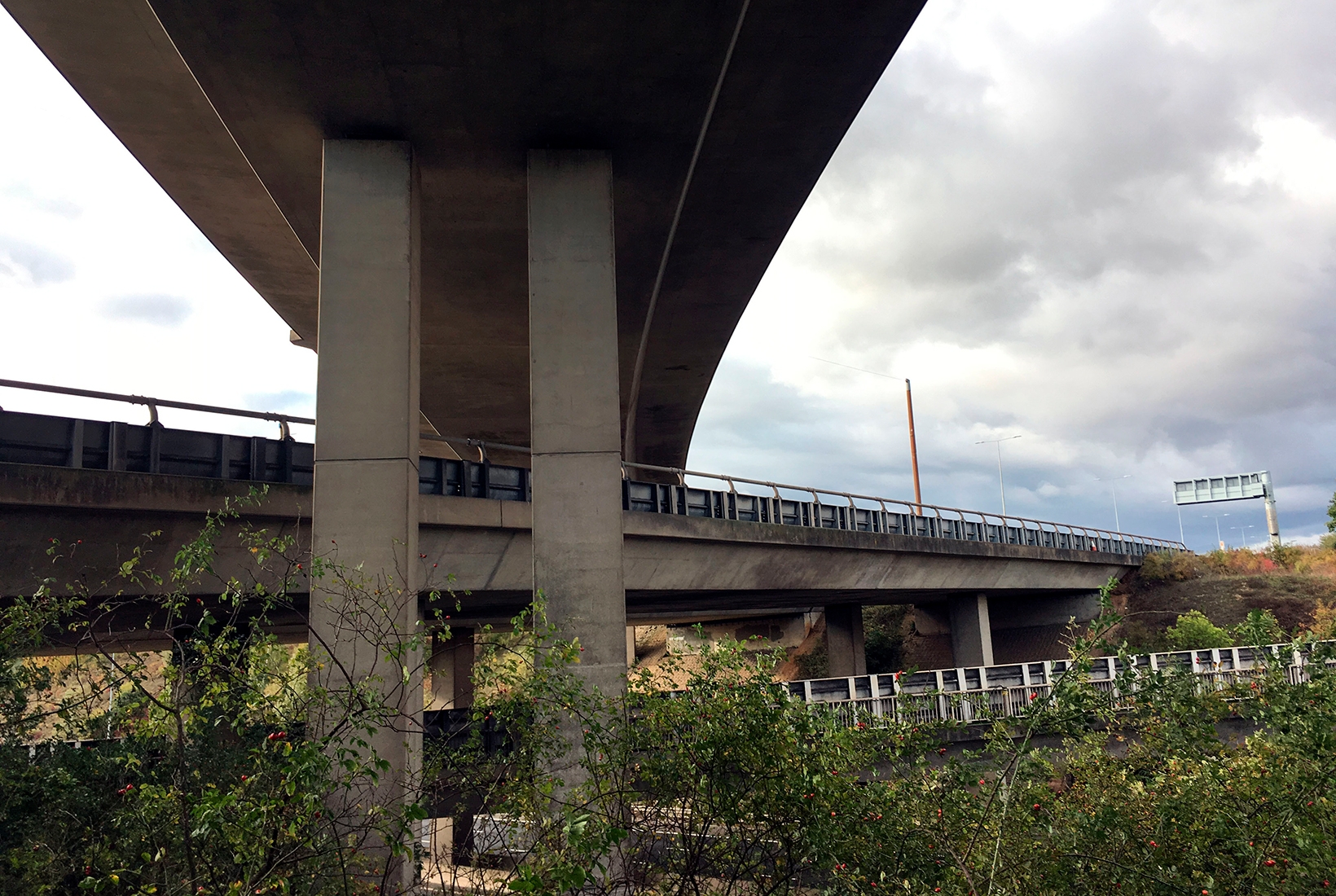When a 90-minute documentary is introduced with the words ‘This is the M25’, you’d be within your rights not to feel your heart soar. Nor would you necessarily expect what follows to be full of wonders of all kinds — natural, historical, literary and scientific. Yet this is exactly what happened in BBC Four’s The Hidden Wilds of the Motorway, presented by Helen Macdonald.
Macdonald is best known for her 2014 bestseller H is for Hawk, which mixed memoir and falconry with a biography of the author T.H. White. In Tuesday’s programme, she was on similarly genre-blending form as she set off on a television journey that, in a rare twist, was an actual journey: clockwise around the M25 from junction one in Kent.
At times, the road served largely as a weird background presence — or what Macdonald arrestingly called ‘a vision from another world’ — amid a much older Britain. At others, she pointed out the surprising effects the motorway has had on the wildlife around it. The nearby great tits, for example, have now developed a much higher-pitched song than their country cousins in order to be heard over the traffic; so much so, Macdonald suggested, that they might be evolving into a separate species. And then there are all those dead spaces immediately surrounding the motorway — which turn out not to be dead at all, but wild meadowland, bursting with life, that wouldn’t exist if Britain’s least favourite road had never been built.
The great tits have developed a much higher-pitched song in order to be heard over the traffic
Not that everything was left to nature. In Hertfordshire, Macdonald met Tony Sangwine who in the 1980s led one of the biggest planting jobs of the 20th century: landscaping the M25’s northern stretch. Sangwine — winningly referred to by Macdonald as ‘the Capability Brown of the orbital road’ —described how carefully he’d arranged more than two million trees and shrubs that most of us notice only subliminally, if we notice them at all. (Anyone who watched the programme, mind you, will definitely notice how beautiful they are from now on.)
Through all of this — and much more — Macdonald proved a complete TV natural: unfailingly good company and somehow managing to be both heartfelt and relaxed at the same time, whether she was deftly summarising the ideas of J.G. Ballard, reminding us that English rural life has never been as tranquil as townies like to think, or explaining how mosses are central to all life on earth. She also tossed in any number of memorable asides. Who knew that in Baltic mythology fungi were seen as the fingers of the god of the dead? Or that there was such a thing as Baltic mythology? Or that Charles Darwin’s daughter Henrietta systematically collected and burned stinkhorn mushrooms (accurate Latin name: Phallus impudicus) so as ‘to protect the morals of the maids’.
John Updike, possibly the greatest novelist ever to appear in The Simpsons, used to say that the purpose of life was ‘to pay attention’. By paying it so assiduously here, Macdonald inspired us to do the same — and even to look at the world with new eyes.
According to its creator John Logan, although Penny Dreadful: City of Angels (Wednesday) is set in 1938 Los Angeles, ‘it’s about 2020’. To be honest, I think we might have guessed that anyway. The first episode began with a portentous voice-over foretelling a time when all sorts of dreadful things would happen. ‘On that day,’ it went on, ‘a leader will arise and set all the kingdoms to war and all the races one against the other’ — a prophecy that couldn’t have made its point any clearer if a photo of Donald Trump had appeared on the screen.
From there, such firm rib-nudging never let up for long. When not bulldozing a Mexican neighbourhood to make room for a new highway, one city father found time to praise ‘a fellow who understands the judicious exercise of power’ by the name of Adolf Hitler. Meanwhile, a swastika-waving member of the German American Bund was urging his onlookers to put ‘America first’.
Despite its title, the series isn’t a sequel to Logan’s original Penny Dreadful, which mashed up more or less every Victorian gothic character from Dracula to Mr Hyde by way of Dorian Gray. Instead, it’s described — again somewhat portentously — as a ‘spiritual descendant’. In practice, this means that the supernatural is still at work, as an evil Mexican goddess seeks to capture the souls of all mankind (with particular reference to LA’s civic leaders and cops).
So far, she seems to be doing rather well — but at some cost to the programme. Much of the straightforward naturalistic stuff, especially a Mexican detective and his Jewish partner investigating a murder, is undeniably good. Nevertheless, you can’t help feeling it would be better still without its embarrassingly solemn and self-important overlay.







Comments